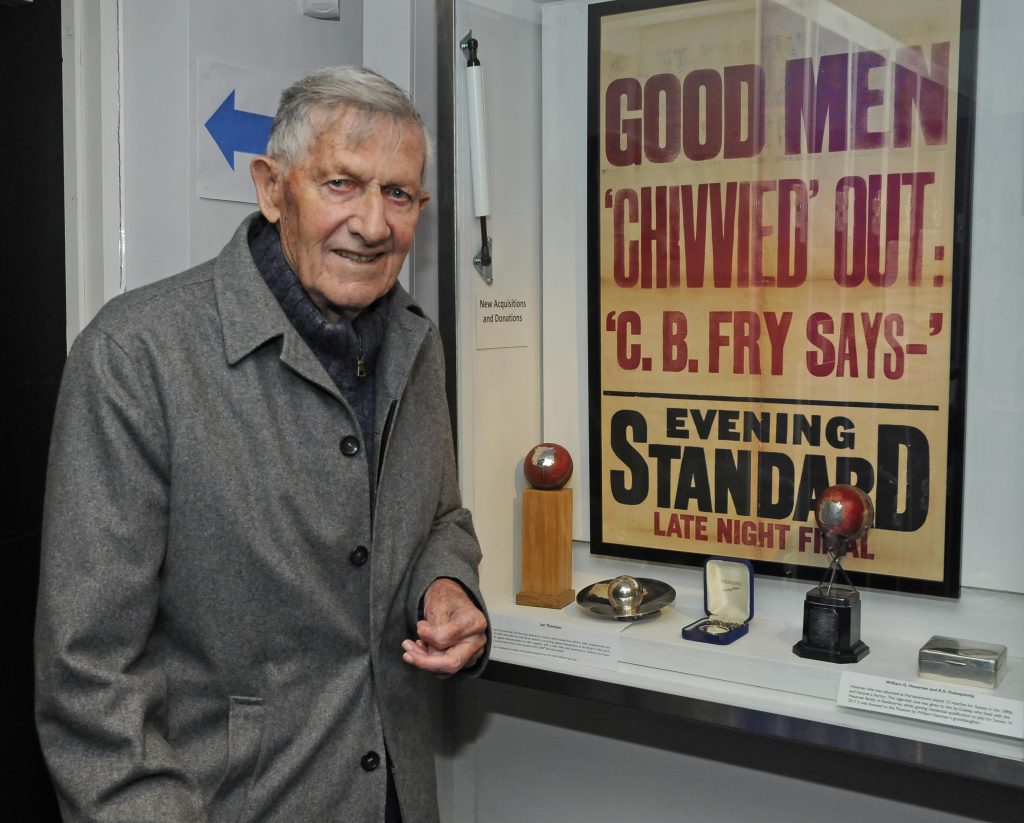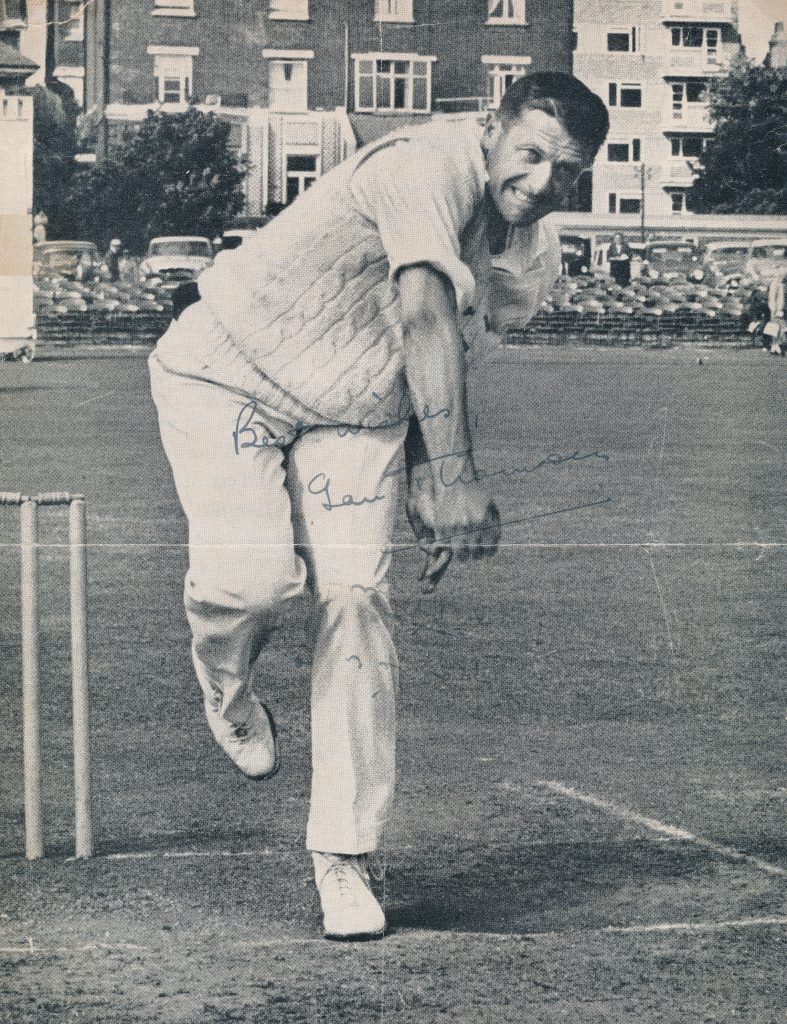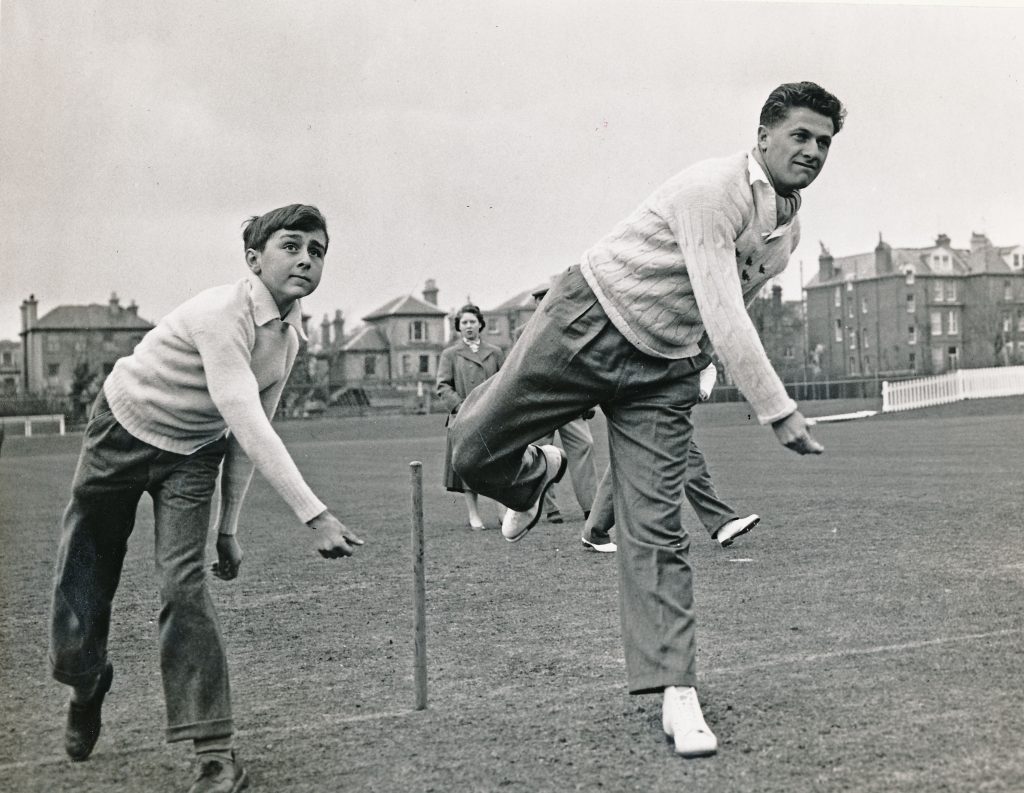It is with great regret that we announce the death of Ian Thomson, one of the greatest if not the greatest, of Sussex cricketers, who died on Sunday afternoon at his home in Henfield, aged 92. Neil was a true Sussex stalwart and The County Ground was an important place for Neil and indeed his whole family.
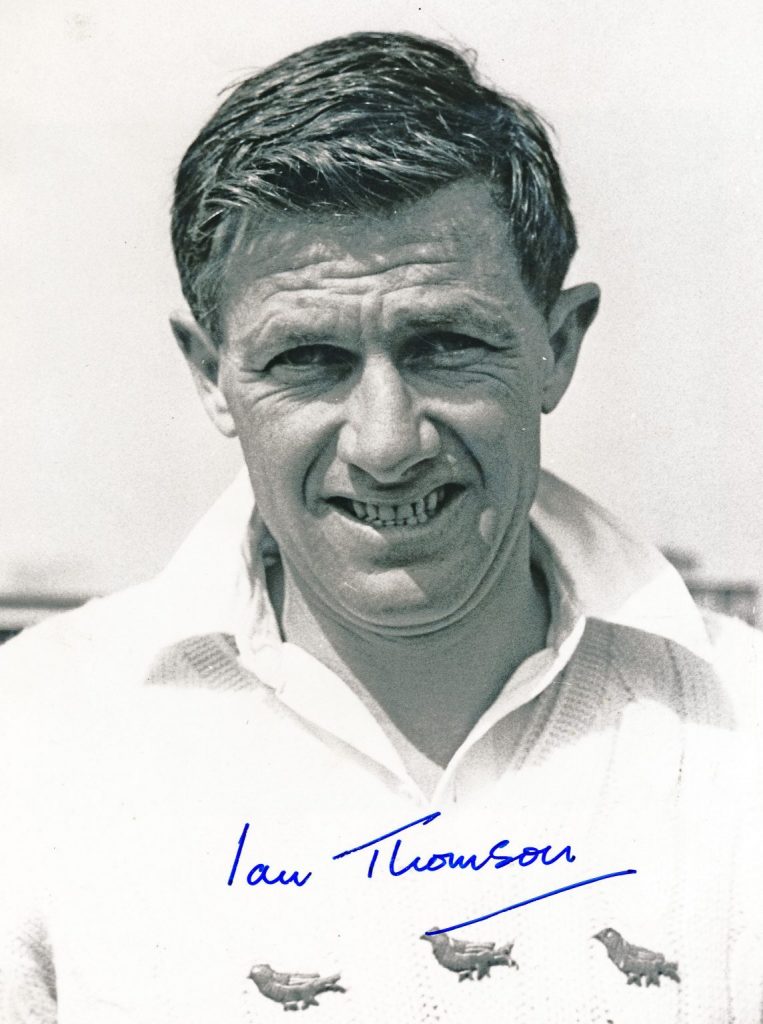
Off an unthreatening run, Ian Thomson bowled 14,039 overs of in-dippers and leg-cutters in first-class cricket for Sussex and another 321 in limited-overs cricket. He bowled them to some effect, taking nearly 1,600 wickets in the course of fifteen seasons in those two formats. Only three Sussex players, all from times when careers spanned twenty seasons or more, have been numerically more successful. His tally included twelve successive seasons, from 1953 to 1964, when he secured 100 wickets for the county in first-class matches. His endurance encouraged one of the game’s more lyrical writers to speculate that he may have been bowling ‘from the dawn of time’. Ironically he is absent from Harry Pearson’s book, ‘The Trundlers’, subtitled ‘Underrate them at your peril’. Enough said. Nor should nearly 7,000 runs be forgotten; there were 13 fifties for the county and a goodly number of appearances at six or seven in the batting order.
He was a product of cricket in Metropolitan Essex rather than the South Coast game. Though he was born in the Black Country, the family lived at Ilford and had a vehicle business in East Ham. During the war the Thomsons became dissatisfied with Ian’s education when he became an evacuee and eventually sent him to Forest School at Walthamstow, a fee-paying establishment with a considerable sporting tradition. In four summers, 1944 to 1947, in the school’s first eleven he scored 631 runs at 17.05, and took 142 wickets at 11.00, achievements which greatly enthused correspondents of The Cricketer magazine. Surprisingly he never figured in schools representative matches at Lord’s; he made little progress up the Essex ladder, perhaps because one T.E.Bailey though him ‘not good enough’. National Service with the Royal Air Force brought him cricket but not in the higher echelon matches played by the service. He played club cricket for Ilford and for the Club Cricket Conference. (He also played for Ilford in Isthmian League football.) When the family took a flat in 1951 in Brunswick Square in Hove, by now 22, he wrote to Sussex seeking a trial. By way of response, the county fielded him as an amateur in all ten of its Second Eleven matches in its final season in the Minor Counties Championship. His batting, typically at four or five, brought him 380 runs at 25.33, and his bowling … just four wickets at 74.25.
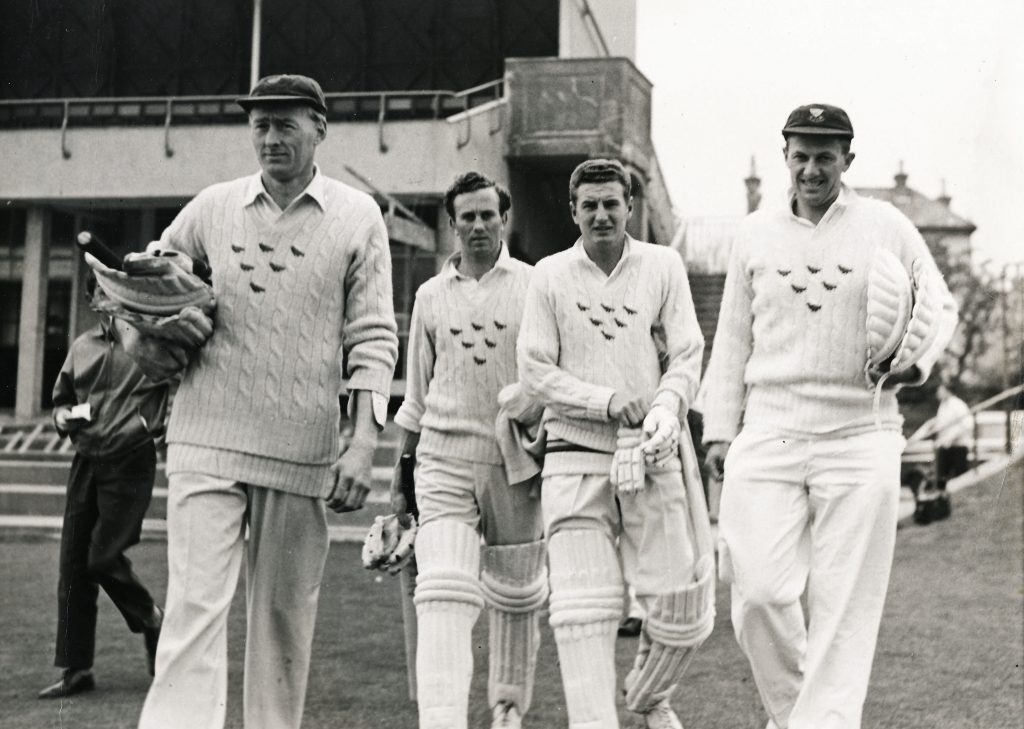
In 1952, still an amateur given time off from the family business − but treated by the county more as an unpaid professional − he established a firm foothold in the first team by playing nineteen first-class matches, latterly as a new-ball bowler. With the emigration of Jim Cornford, and his run-up and action improved with help from Jim Langridge, he played a key role as professional opening bowler and leading wicket-taker in David Sheppard’s 1953 side. In eight of the following eleven seasons, until displaced by Tony Buss and John Snow in 1965 (and just after his selection, at last, as a Test cricketer) he took more wickets than any of his Sussex colleagues. The highlights included the wet season of 1958 when he took 133 wickets at 16.57, including 10 ‘five-fors’ after MCC asked counties to ‘go easy’ on pitch preparation; his all-ten at Worthing in June 1964, a feat unequalled in the Championship for the next thirty seasons; and his Man of the Match award in the Gillette Cup final of 1964 when his sinking of the Warwickshire early order gave Sussex the trophy. The family business reclaimed him after 1965, but he released himself from its clutches in 1971 and 1972 when past forty, to play in 22 limited-overs games and a couple of Championship fixtures when the county’s seam-bowling resources became threadbare. He then took on a new profession, teaching, in 1972 first at Brighton College and then at Bevendean Primary School in the town’s northern suburbs.
For more on Ian Thomson click here
